
数字通信(第五版)(英文版)
¥ 80 4.0折 ¥ 199 八五品
仅1件
江苏南京
认证卖家担保交易快速发货售后保障
作者[美]John G. Proakis(普罗科斯);Masoud Salehi(萨利希
出版社电子工业出版社
出版时间2019-10
版次5
装帧其他
货号7B一6
上书时间2024-09-13
- 店主推荐
- 最新上架
商品详情
- 品相描述:八五品
图书标准信息
- 作者 [美]John G. Proakis(普罗科斯);Masoud Salehi(萨利希
- 出版社 电子工业出版社
- 出版时间 2019-10
- 版次 5
- ISBN 9787121367519
- 定价 199.00元
- 装帧 其他
- 开本 16开
- 纸张 胶版纸
- 页数 1168页
- 字数 1635千字
- 【内容简介】
- 本书是数字通信领域的一本优秀教材,既论述了数字通信的基本理论,又对数字通信的新技术进行了比较深入的分析。本书采用信号空间、随机过程的级数展开和等效低通等分析方法,根据*接收准则,先后讨论并分析了在加性高斯白噪声(AWGN)信道、带限信道(有符号间干扰和加性噪声)和多径衰落信道三种基本的典型信道条件下的数字信号可靠高效传输及*接收问题;从信号传输角度介绍了通信信号、数字调制、自适应均衡、多天线系统和*接收等内容;从信息传输角度介绍了信息论基础、信道容量和信道编码等内容。
- 【作者简介】
-
John G. Proakis:美国东北大学电子与计算机工程系教授,其研究方向为数字通信与数字信号处理,主要包括自适应滤波、自适应通信系统、自适应均衡技术、多径衰落信道的通信、雷达侦测、信号参数估计、通信系统建模与仿真、*优化技术、统计分析等,已多次出版《数字通信》《数字信号处理》等经典著作。
John G. Proakis:美国东北大学电子与计算机工程系教授,其研究方向为数字通信与数字信号处理,主要包括自适应滤波、自适应通信系统、自适应均衡技术、多径衰落信道的通信、雷达侦测、信号参数估计、通信系统建模与仿真、*优化技术、统计分析等,已多次出版《数字通信》《数字信号处理》等经典著作。 - 【目录】
-
Preface
Chapter 1 Introduction 1
1.1 Elements of a Digital Communication System 1
1.2 Communication Channels and Their Characteristics 3
1.3 Mathematical Models for Communication Channels 10
1.4 A Historical Perspective in the Development of Digital Communications 12
1.5 Overview of the Book 15
1.6 Bibliographical Notes and References 15
Chapter 2 Deterministic and Random Signal Analysis 17
2.1 Bandpass and Lowpass Signal Representation 18
2.1?C1 Bandpass and Lowpass Signals / 2.1?C2 Lowpass Equivalent of Bandpass Signals / 2.1?C3 Energy Considerations / 2.1?C4 Lowpass Equivalent of a Bandpass System
2.2 Signal Space Representation of Waveforms 28
2.2?C1 Vector Space Concepts / 2.2?C2 Signal Space Concepts / 2.2?C3 Orthogonal Expansions of Signals /2.2?C4 Gram-Schmidt Procedure
2.3 Some Useful Random Variables 40
2.4 Bounds on Tail Probabilities 56
2.5 Limit Theorems for Sums of Random Variables 63
2.6 Complex Random Variables 63
2.6?C1 Complex Random Vectors
2.7 Random Processes 66
2.7?C1 Wide-Sense Stationary Random Processes / 2.7?C2 Cyclostationary Random Processes / 2.7?C3 Proper and Circular Random Processes / 2.7?C4 Markov Chains
2.8 Series Expansion of Random Processes 74
2.8?C1 Sampling Theorem for Band-Limited Random Processes / 2.8?C2 The Karhunen-Loève Expansion
2.9 Bandpass and Lowpass Random Processes 78
2.10 Bibliographical Notes and References 82
Problems 82
Chapter 3 Digital Modulation Schemes 95
3.1 Representation of Digitally Modulated Signals 95
3.2 Memoryless Modulation Methods 97
3.2?C1 Pulse Amplitude Modulation (PAM) / 3.2?C2 Phase Modulation / 3.2?C3 Quadrature Amplitude Modulation / 3.2?C4 Multidimensional Signaling
3.3 Signaling Schemes with Memory 114
3.3?C1 Continuous-Phase Frequency-Shift Keying (CPFSK) / 3.3?C2 Continuous-Phase Modulation (CPM)
3.4 Power Spectrum of Digitally Modulated Signals 131
3.4?C1 Power Spectral Density of a Digitally Modulated Signal with Memory / 3.4?C2 Power Spectral Density of Linearly Modulated Signals / 3.4?C3 Power Spectral Density of Digitally Modulated Signals with Finite Memory / 3.4?C4 Power Spectral Density of Modulation Schemes with a Markov Structure / 3.4?C5 Power Spectral Densities of CPFSK and CPM Signals
3.5 Bibliographical Notes and References 148
Problems 148
Chapter 4 Optimum Receivers for AWGN Channels 160
4.1 Waveform and Vector Channel Models 160
4.1?C1 Optimal Detection for a General Vector Channel
4.2 Waveform and Vector AWGN Channels 167
4.2?C1 Optimal Detection for the Vector AWGN Channel / 4.2?C2 Implementation of the Optimal Receiver for AWGN Channels / 4.2?C3 A Union Bound on the Probability of Error of Maximum Likelihood Detection
4.3 Optimal Detection and Error Probability for Band-Limited Signaling 188
4.3?C1 Optimal Detection and Error Probability for ASK or PAM Signaling / 4.3?C2 Optimal Detection and Error Probability for PSK Signaling / 4.3?C3 Optimal Detection and Error Probability for QAM Signaling / 4.3?C4 Demodulation and Detection
4.4 Optimal Detection and Error Probability for Power-Limited Signaling 203
4.4?C1 Optimal Detection and Error Probability for Orthogonal Signaling / 4.4?C2 Optimal Detection and Error Probability for Biorthogonal Signaling / 4.4?C3 Optimal Detection and Error Probability for Simplex Signaling
4.5 Optimal Detection in Presence of Uncertainty: Noncoherent Detection 210
4.5?C1 Noncoherent Detection of Carrier Modulated Signals / 4.5?C2 Optimal Noncoherent Detection of FSK Modulated Signals / 4.5?C3 Error Probability of Orthogonal Signaling with Noncoherent Detection / 4.5?C4 Probability of Error for Envelope Detection of Correlated Binary Signals / 4.5?C5 Differential PSK (DPSK)
4.6 A Comparison of Digital Signaling Methods 226
4.6?C1 Bandwidth and Dimensionality
4.7 Lattices and Constellations Based on Lattices 230
4.7?C1 An Introduction to Lattices / 4.7?C2 Signal Constellations from Lattices
4.8 Detection of Signaling Schemes with Memory 242
4.8?C1 The Maximum Likelihood Sequence Detector
4.9 Optimum Receiver for CPM Signals 246
4.9?C1 Optimum Demodulation and Detection of CPM /4.9?C2 Performance of CPM Signals / 4.9?C3 Suboptimum Demodulation and Detection of CPM Signals
4.10 Performance Analysis for Wireline and Radio Communication Systems 259
4.10?C1 Regenerative Repeaters / 4.10?C2 Link Budget Analysis in Radio Communication Systems
4.11 Bibliographical Notes and References 265
Problems 266
Chapter 5 Carrier and Symbol Synchronization 290
5.1 Signal Parameter Estimation 290
5.1?C1 The Likelihood Function / 5.1?C2 Carrier Recovery and Symbol Synchronization in Signal Demodulation
5.2 Carrier Phase Estimation 295
5.2?C1 Maximum-Likelihood Carrier Phase Estimation /5.2?C2 The Phase-Locked Loop / 5.2?C3 Effect of Additive Noise on the Phase Estimate / 5.2?C4 Decision-Directed Loops / 5.2?C5 Non-Decision-Directed Loops
5.3 Symbol Timing Estimation 315
5.3?C1 Maximum-Likelihood Timing Estimation /5.3?C2 Non-Decision-Directed Timing Estimation
5.4 Joint Estimation of Carrier Phase and Symbol Timing 321
5.5 Performance Characteristics of ML Estimators 323
5.6 Bibliographical Notes and References 326
Problems 327
Chapter 6 An Introduction to Information Theory 330
6.1 Mathematical Models for Information Sources 331
6.2 A Logarithmic Measure of Information 332
6.3 Lossless Coding of Information Sources 335
6.3?C1 The Lossless Source Coding Theorem / 6.3?C2 Lossless Coding Algorithms
6.4 Lossy Data Compression 348
6.4?C1 Entropy and Mutual Information for Continuous Random Variables / 6.4?C2 The Rate Distortion Function
6.5 Channel Models and Channel Capacity 354
6.5?C1 Channel Models / 6.5?C2 Channel Capacity
6.6 Achieving Channel Capacity with Orthogonal Signals 367
6.7 The Channel Reliability Function 369
6.8 The Channel Cutoff Rate 371
6.8?C1 Bhattacharyya and Chernov Bounds / 6.8?C2 Random Coding
6.9 Bibliographical Notes and References 380
Problems 381
Chapter 7 Linear Block Codes 400
7.1 Basic De?nitions 401
7.1?C1 The Structure of Finite Fields / 7.1?C2 Vector Spaces
7.2 General Properties of Linear Block Codes 411
7.2?C1 Generator and Parity Check Matrices / 7.2?C2 Weight and Distance for Linear Block Codes / 7.2?C3 The Weight Distribution Polynomial / 7.2?C4 Error Probability of Linear Block Codes
7.3 Some Speci?c Linear Block Codes 420
7.3?C1 Repetition Codes / 7.3?C2 Hamming Codes /7.3?C3 Maximum-Length Codes / 7.3?C4 Reed-Muller Codes / 7.3?C5 Hadamard Codes / 7.3?C6 Golay Codes
7.4 Optimum Soft Decision Decoding of Linear Block Codes 424
7.5 Hard Decision Decoding of Linear Block Codes 428
7.5?C1 Error Detection and Error Correction Capability of Block Codes / 7.5?C2 Block and Bit Error Probability for Hard Decision Decoding
7.6 Comparison of Performance between Hard Decision and Soft Decision Decoding 436
7.7 Bounds on Minimum Distance of Linear Block Codes 440
7.7?C1 Singleton Bound / 7.7?C2 Hamming Bound /7.7?C3 Plotkin Bound / 7.7?C4 Elias Bound / 7.7?C5 McEliece-Rodemich-Rumsey-Welch (MRRW) Bound /7.7?C6 Varshamov-Gilbert Bound
7.8 Modi?ed Linear Block Codes 445
7.8?C1 Shortening and Lengthening / 7.8?C2 Puncturing and Extending / 7.8?C3 Expurgation and Augmentation
7.9 Cyclic Codes 447
7.9?C1 Cyclic Codes — De?nition and Basic Properties /7.9?C2 Systematic Cyclic Codes / 7.9?C3 Encoders for Cyclic Codes / 7.9?C4 Decoding Cyclic Codes / 7.9?C5 Examples of Cyclic Codes
7.10 Bose-Chaudhuri-Hocquenghem (BCH) Codes 463
7.10?C1 The Structure of BCH Codes / 7.10?C2 Decoding BCH Codes
7.11 Reed-Solomon Codes 471
7.12 Coding for Channels with Burst Errors 475
7.13 Combining Codes 477
7.13?C1 Produc
点击展开
点击收起
相关推荐
— 没有更多了 —









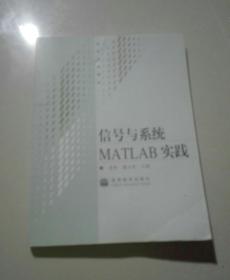

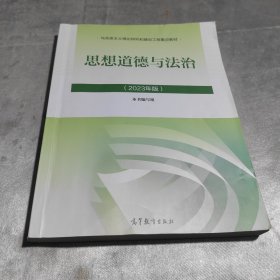
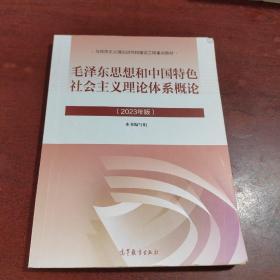
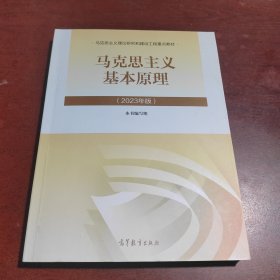
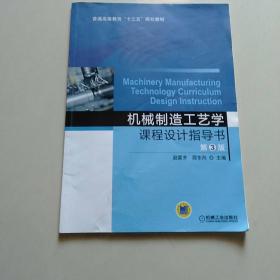
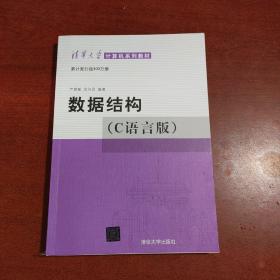
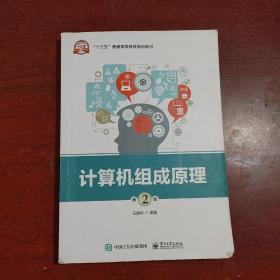



















以下为对购买帮助不大的评价